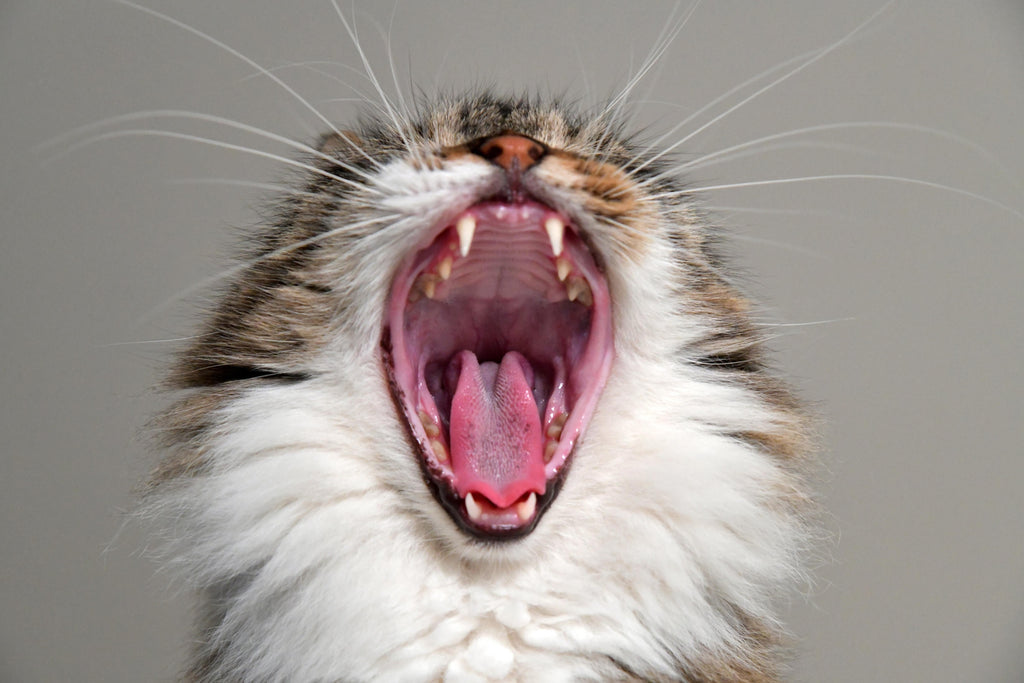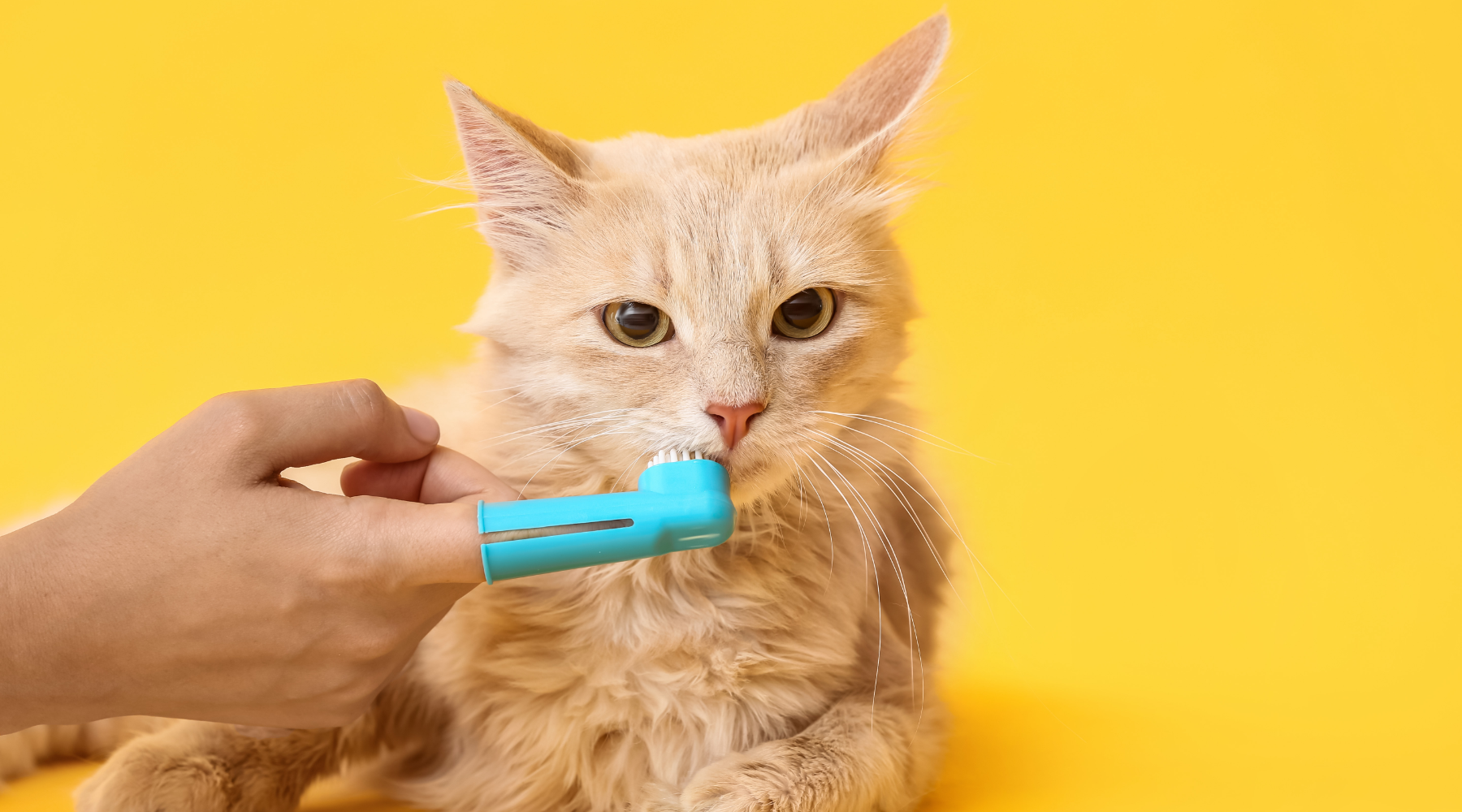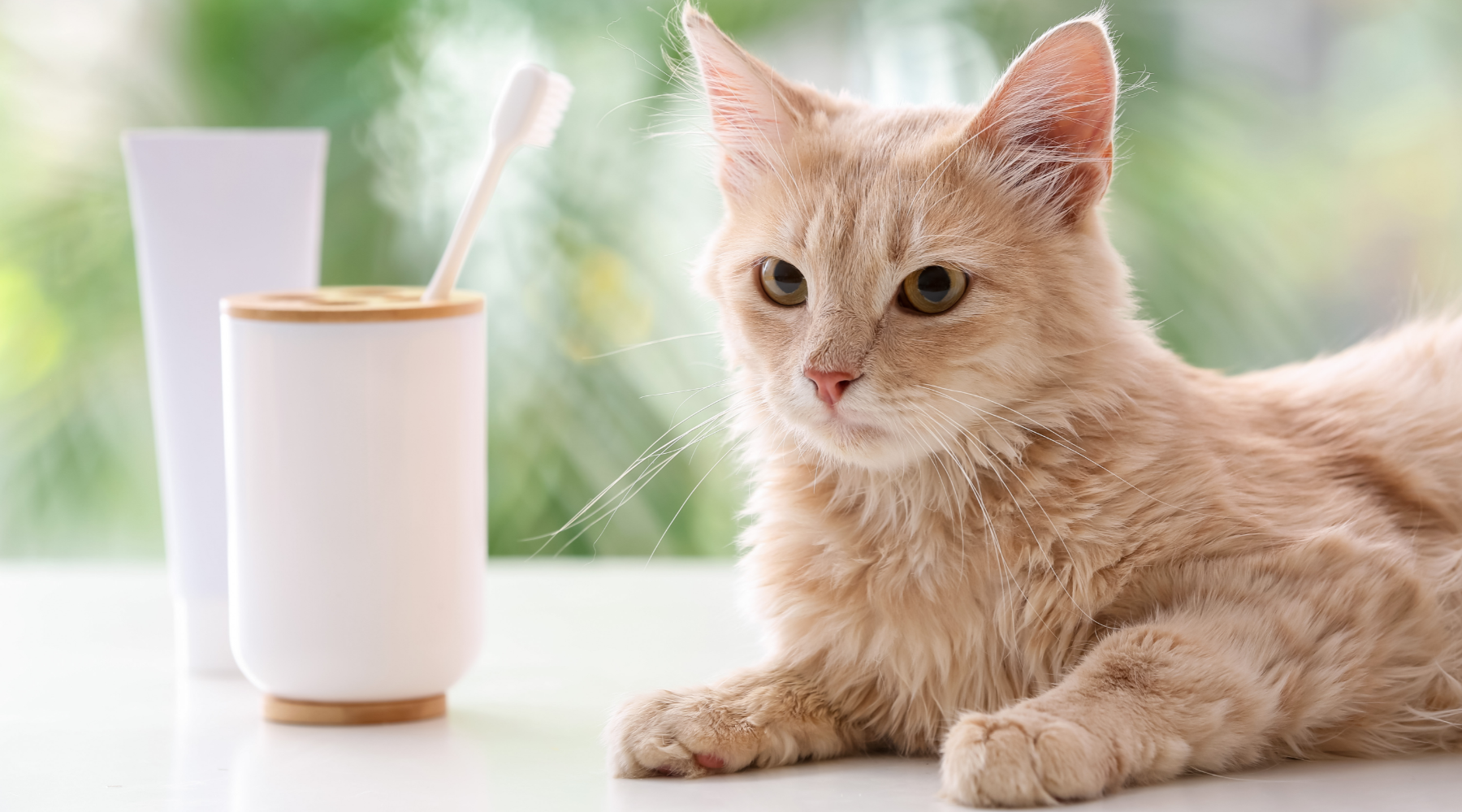Menu
-
-
Product
-
Design
- Animals
- Family
- Theme
- Occasion
-
Collection
- Articulate
- Blockscape
- Boxed
- Catrovert
- Christmas Lights
- Christmas Tree of...
- Dog Breed Ears
- Dogtrovert
- Doodled Animals
- Electristack
- Eyesight
- Family Stacked
- Frosty
- Halftone Animals
- Heart Full
- Hearts
- Heart Strings
- Jolly
- Life Happens
- Love Always
- Most Likely
- Nightmare
- Paw
- Profile Animals
- Pumpkin
- Red Nose
- Reflections
- Santa
- Sorry I'm Late
- Thankful
- The Doggy Bunch
- Turkey Thoughts
- USA
- Witch
- Find Your Breed
- Gift Cards
- Search
-
- FREE SHIPPING ON ORDERS OVER $100
- Login

4 min read
How to Brush Your Cat’s Teeth in 5 Simple Steps
Just like humans, cats need to have their teeth brushed in order to stay healthy. Not only does it help keep their teeth clean, it also helps prevent tooth decay which could lead to serious health problems later in life. In this post, we'll walk you through how to brush your cat’s teeth in 5 simple steps.

Do You Need to Brush Your Cat's Teeth?
The simple answer is yes. Good dental hygiene for cats is important for the exact same reasons it’s important for us. It helps your cat to keep their teeth and enjoy life to the fullest, even into their older years.
Unfortunately, tooth and gum diseases are commin in cats. According to Cornell Feline Heath Center, studies suggest that between 50-90% of cats older than the age of 4 suffer some form of dental disease.
Fortunately, brushing regularly removes plaque, which can prevent tooth loss and other oral health complications. It’s also a great way to catch problems before they start.
How Often Should I Brush My Cat’s Teeth?
It is recommended to brush your cat’s teeth daily, and twice a day if possible. It is also highly recommended to take your cat to the vet for a thorough dental cleaning once a year to help keep their mouths happy and healthy.

How to Brush Your Cat’s Teeth in 5 Simple Steps
1. Choose a Cat-Safe Toothpaste and Toothbrush
Before you start brushing, you’ll need the right tools to get the job done. Avoid using products made for humans such as human grade toothpaste (the ingredients can upset your cat’s stomach) and toothbrushes (which are too large for a cat’s mouth). Find a toothpaste that has light ingredients, healthy ingredients that are not toxic to your cat and a small pet toothbrush to fit comfortably in your cat’s mouth. The bonus of pet toothbrushes are the bristles which are ultra soft for extra-gentle cleaning.
2. Introduce the Feeling of Brushing
Unsurprisingly, the majority of cats dislike having their teeth brushed. The entire process can be frightening for them in the first few attempts at cleaning, which is why it’s essential to be patient and take it slow. Before you dive in, spend some time with your pet and have them become acquainted with the brushing tools. Introduce them in a comfortable environment and let them take their time to become familiar with the toothbrush.
Once your cat is relaxed, use your finger to massage their lips in slow, circular motions. Then, once they are comfortable, repeat the same motion against their teeth and gum— if you can. Again, take it slow! Patience is key since it may take a few weeks for your cat to become completely comfortable. However, trying this at least once a day will help to prepare your cat for having their teeth brushed in the future.
3. Introduce the Toothpaste
Once your cat is comfortable with a gum massage, it’s time to integrate the toothpaste. A pet-friendly toothpaste with a tasty mint or poultry-flavor may even taste good to your cat which would make it easier for you to brush. Start by adding a pea size amount on one of your fingers and let your cat sniff and lick it. If they smell or taste it, praise them and reward them with a treat. Positive reinforcement is key.
4. Introduce the Toothbrush
Next, introduce the cat-friendly toothbrush. Start by adding a tiny bit of toothpaste onto the toothbrush. Let your cat be curious and reward them if they lick the toothbrush or toothpaste. You may have to do this for several days to get your cat comfortable with their toothbrush and toothpaste combination.
5. Brush Away!
Once your cat is comfortable with all of the steps listed above, they are ready to have their teeth brushed. As you may have guessed, it’s easiest to get the job done efficiently in a space where your cat is comfortable, such as on the couch, kitchen counter, or in your lap.
- With your cat facing you, gently push back your cat’s lips to reveal their teeth.
- Take a moment to do a quick inspection — see signs of tooth decay below.
- If everything looks good, pull out the toothbrush and add a pea-sized amount of pet toothpaste.
- Using small, circular movements, brush the toothbrush over the outside of your cat’s teeth and gum line.
Don’t worry about brushing your cat’s teeth all at once, it's perfectly common to experience short intervals brushing or break up the process over the course of a few days. Once they are done, offer lots of praise and reward your cat with scratches, head pats, or their favorite toy.

Signs Your Cat Should be Treated by a Vet
During the oral inspection, be sure to look out for declining signs in your cat's oral health that should be treated by a vet. If your cat’s mouth has an unusually strong odor, it could be signs of a digestive problem or gum condition. Additional signs to look out for include dark red lines across the gums, red or swollen gums, ulcers on the gums or tongue, loose teeth, pus, or excessive drooling. If any of these are evident, make an immediate appointment with your vet for an exam.
Now you know how to brush your cat's teeth, we hope it seems less like a daunting task. By implementing these 5 simple steps, it can become a manageable routine for you and your feline friend. So, take a deep breath, gather your supplies, and get ready to embark on a journey to a healthier, happier cat with a sparkling smile! Don't forget to head to our Cats Collection for all things feline!
1 Response
Leave a comment
Comments will be approved before showing up.
Subscribe
Sign up to get the latest on sales, new releases and more …


Jan
January 09, 2025
Thank you for the good advice. My oldest cat was hit by a car about 5 years ago. Took out her front little teeth and one of her canine teeth. I haven’t gotten in the habit of brushing her teeth due to the injury. But plan on starting today for better oral hygiene.